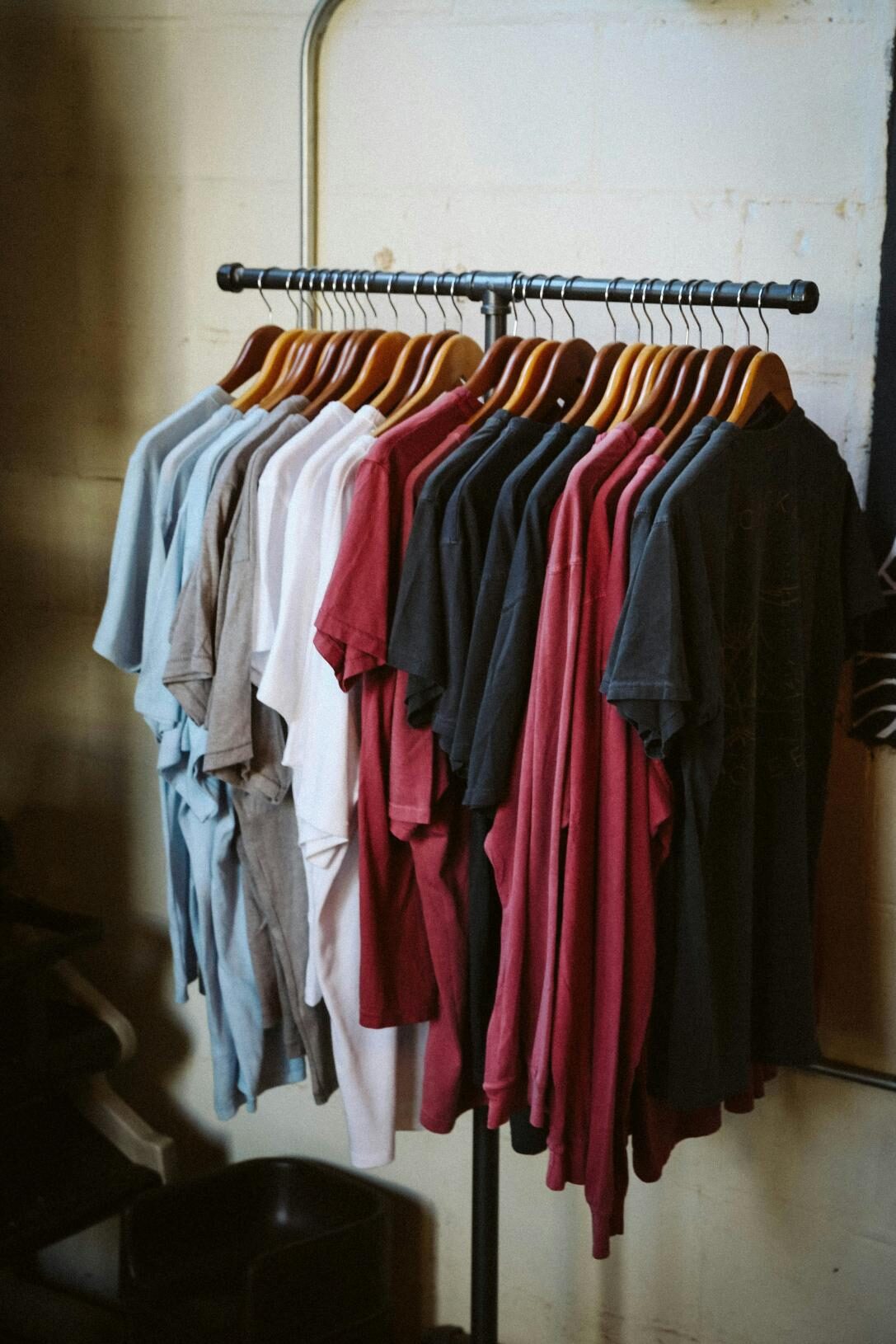In the daily operation of laundry shops, many practitioners meet such troublesome problems. Dark clothes with a normal appearance before washing suddenly turn red in local areas after the standard dry cleaning process. For tops, the local redness is mostly concentrated on the collar, back shoulders, front opening, and the outside of the sleeves, while for trousers or skirts, it often appears above the knees and on the buttocks.

What is more confusing is that these pieces of clothing are usually relatively new and have no natural aging caused by long-term wearing. However, the problem of local redness suddenly occurs after dry cleaning.
Causes
Regarding this phenomenon, the analysis shows that the clothes that easily turn red after dry cleaning generally have three characteristics:
- Fabric color
The clothes whose colors are mainly dark tones, like dark gray, navy blue, and black.
- Fabric component
The fabric contains cotton, mulberry silk, modal, or viscose acetal fibers. These fibers have an impact on the stability of dyes.
- Clothes style
The styles of the clothes are mostly casual pants and other items that are frequently worn in daily life.
Fixes
Delving into the underlying reasons, it mainly stems from the core issue of dye oxidation. It can be specifically broken down into three key links.
- High Sensitivity to Oxidation
The dyes of these dark clothes are inherently sensitive to oxidation. In the normal environment, the oxidation of dyes is slow, and the appearance of clothes doesn’t easily change. Once the temperature of the environment increases, like dry cleaning, high temperature during the drying process, dyes sensitive to oxidation will sharply increase and pose a hidden danger for subsequent color changes. This is why the dark clothes or clothes with natural/recycled fibers most easily turn red.
- Influences Caused by Wearing
When people wear the clothes, their human activities will bring several hidden impacts. The frictions in daily activities will damage the layer of adhesive dyes on the surface of the fabric. The humidity change caused by the sweat and evaporation of skin moisture will also imperceptibly increase the dyes’ sensitivity to oxidation.
At this point, although the dyes have no significant qualitative change, they are already in a critical state. Only a slight external stimulus may trigger a color change.
- Catalyze Qualitative Change of Oxidation
The dry cleaning process is the direct cause of the concentrated outbreak of the redness problem. On the one hand, the dry cleaning solvents may break the original stable structure of the dyes. On the other hand, the drying process after dry cleaning requires maintaining a relatively high temperature. This condition superimposes with dye oxidation sensitivity. Under the double reactions, the speed of oxidation accelerates quickly, or even an irreversible qualitative change occurs. Finally, the clothes locally turn red. It should be noted that if people choose water washing and air drying (avoid high temperatures during drying), the phenomenon of clothes turning red will greatly reduce or even disappear.
This also indirectly confirms that the acidic environment of dry cleaning and the high temperature of drying are the key factors triggering the oxidation and quality change of sensitive dyes.
- For laundry shop practitioners, after knowing this principle, they can optimize the services in terms of pretreatment and process adjustment. When receiving clothes that contain fibers like cotton and mulberry silk, laundry shops can communicate with the customer about the potential risk of clothes turning red in advance. If the customers want to use dry cleaning, laundry shop staff should lower the drying temperature in the allowable range of equipment parameters, or recommend a milder water washing solution. Of course, wet cleaning is a better choice.
Kingstar Wet Cleaning Machine
Kingstar wet cleaning machines can set the most suitable washing spin and spin/stop ratio according to clothes with different materials. The minimal spin speed is 15 rpm, which can ensure the washing effect of mulberry silk, wool, cashmere, and so on, and improve customer satisfaction.
Conclusion
In the following articles, Kingstar will continuously share technical insights in the laundry industry and help many laundry shop practitioners solve the practical problems to improve the operating efficiency.




